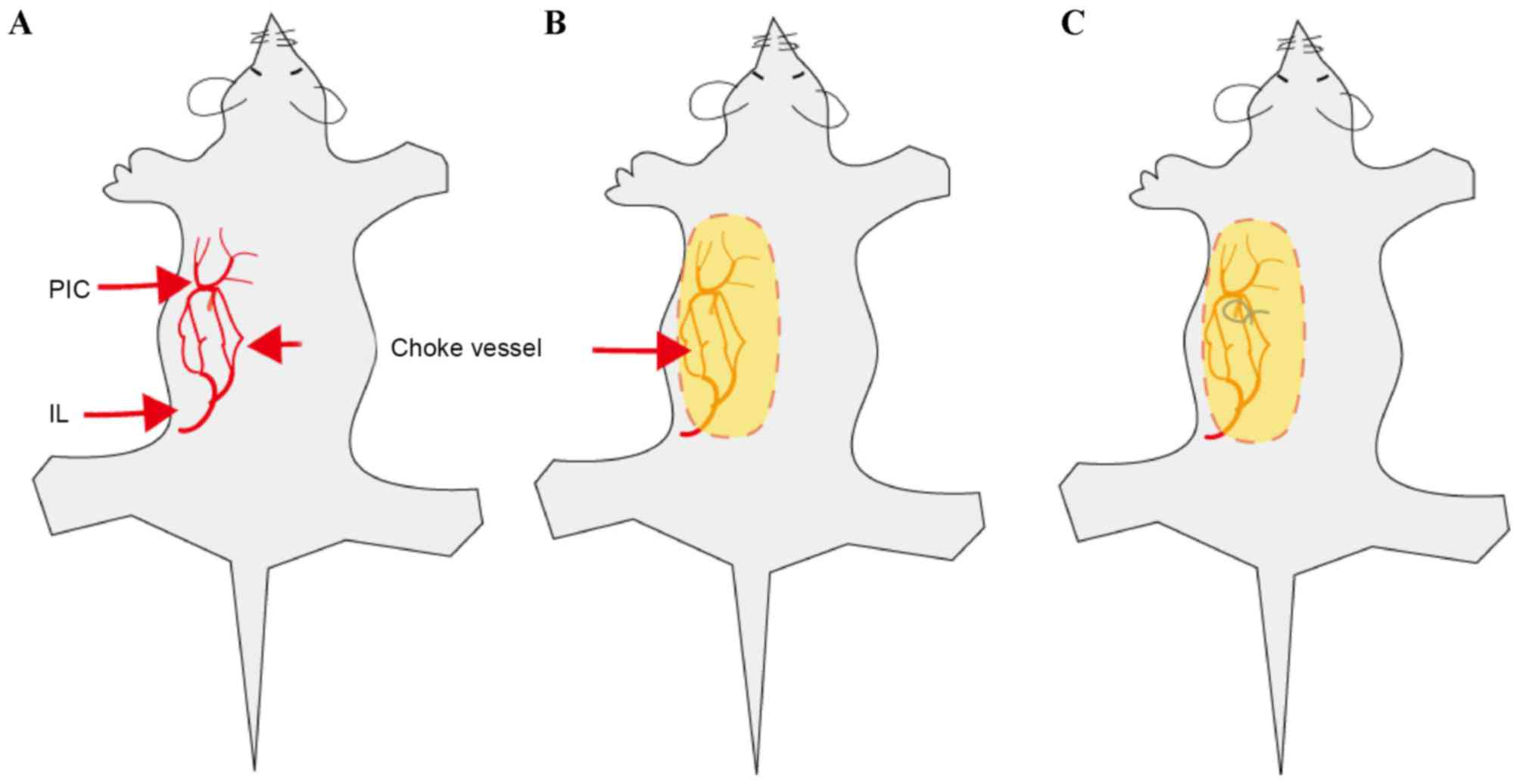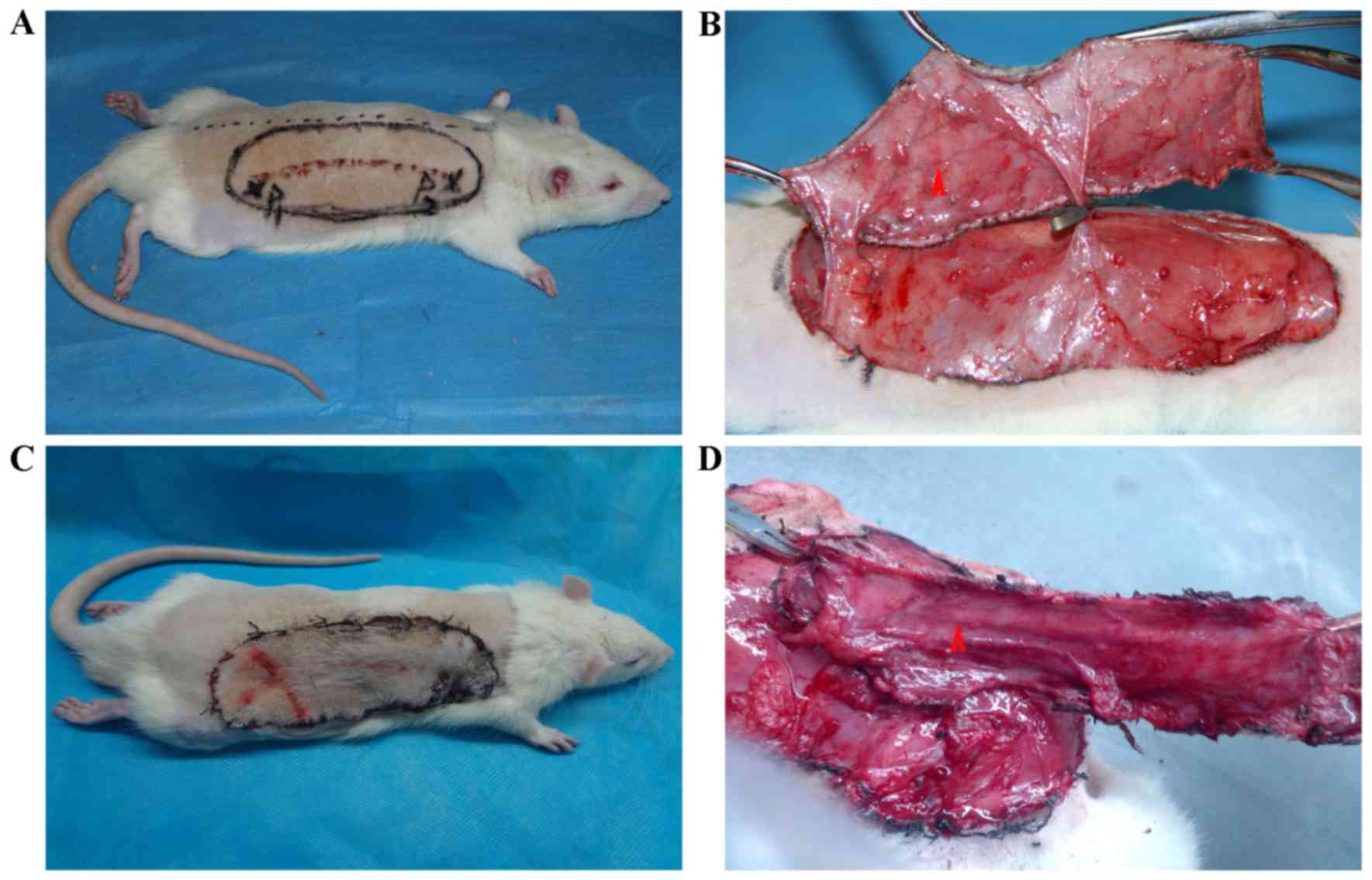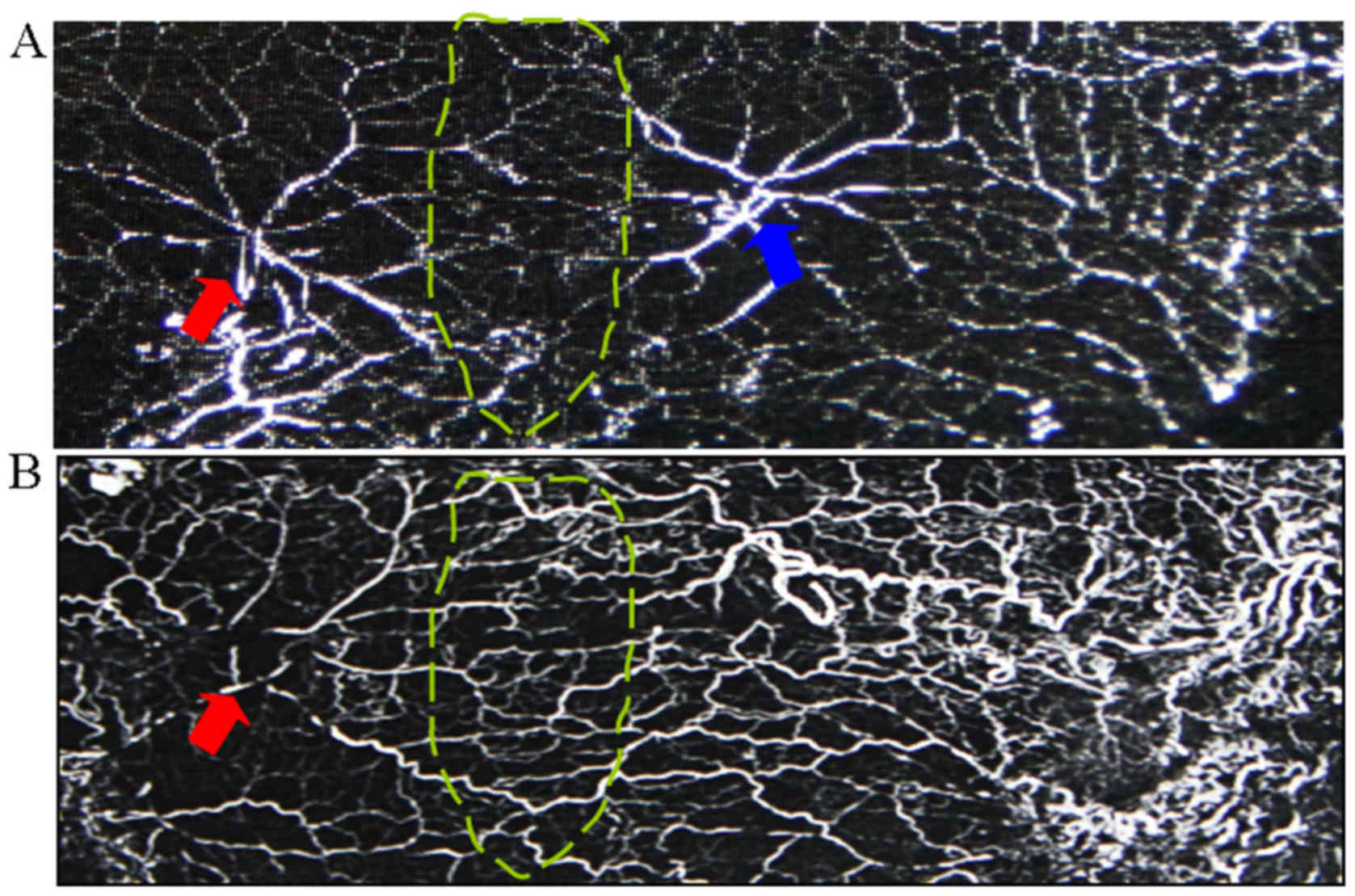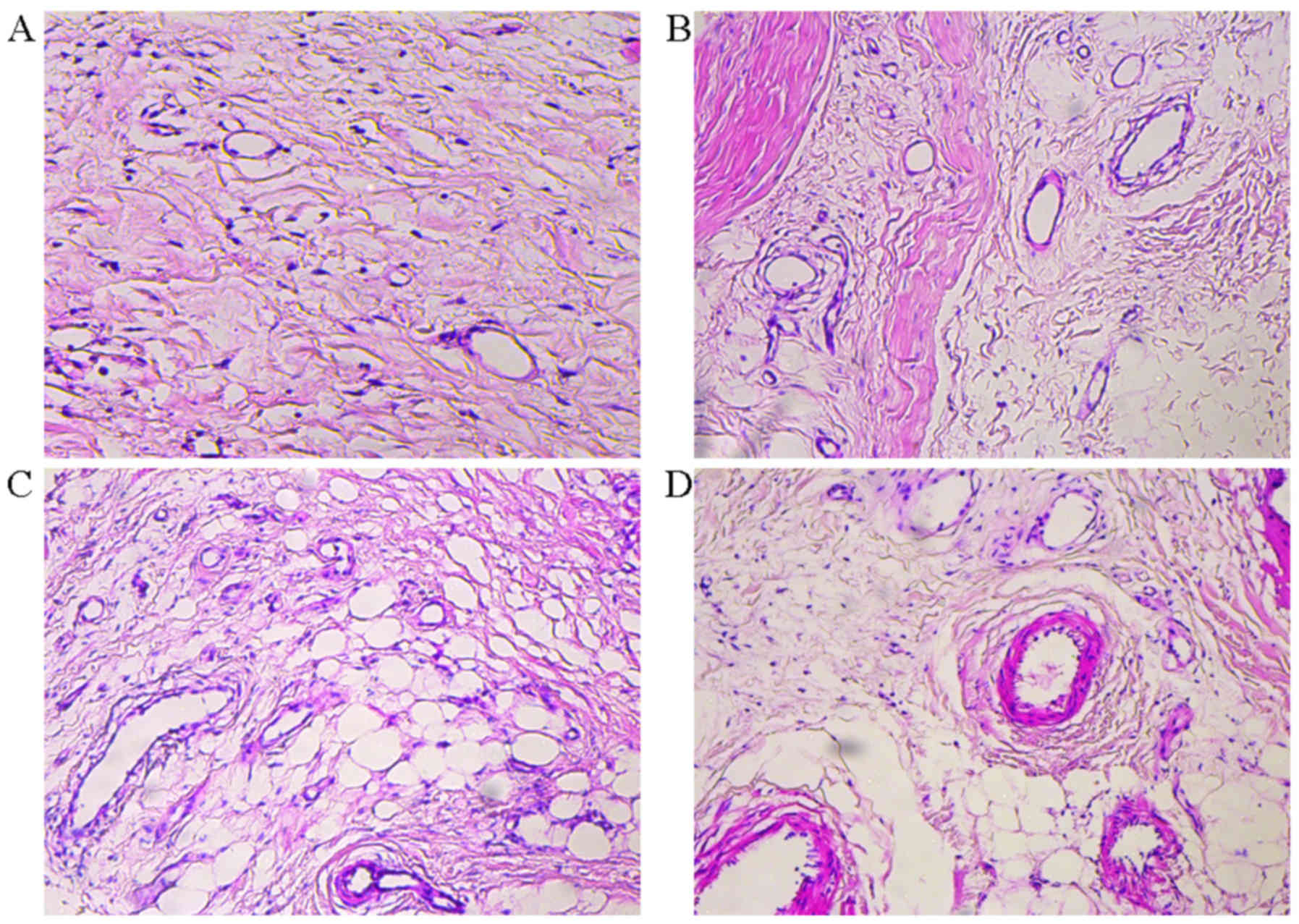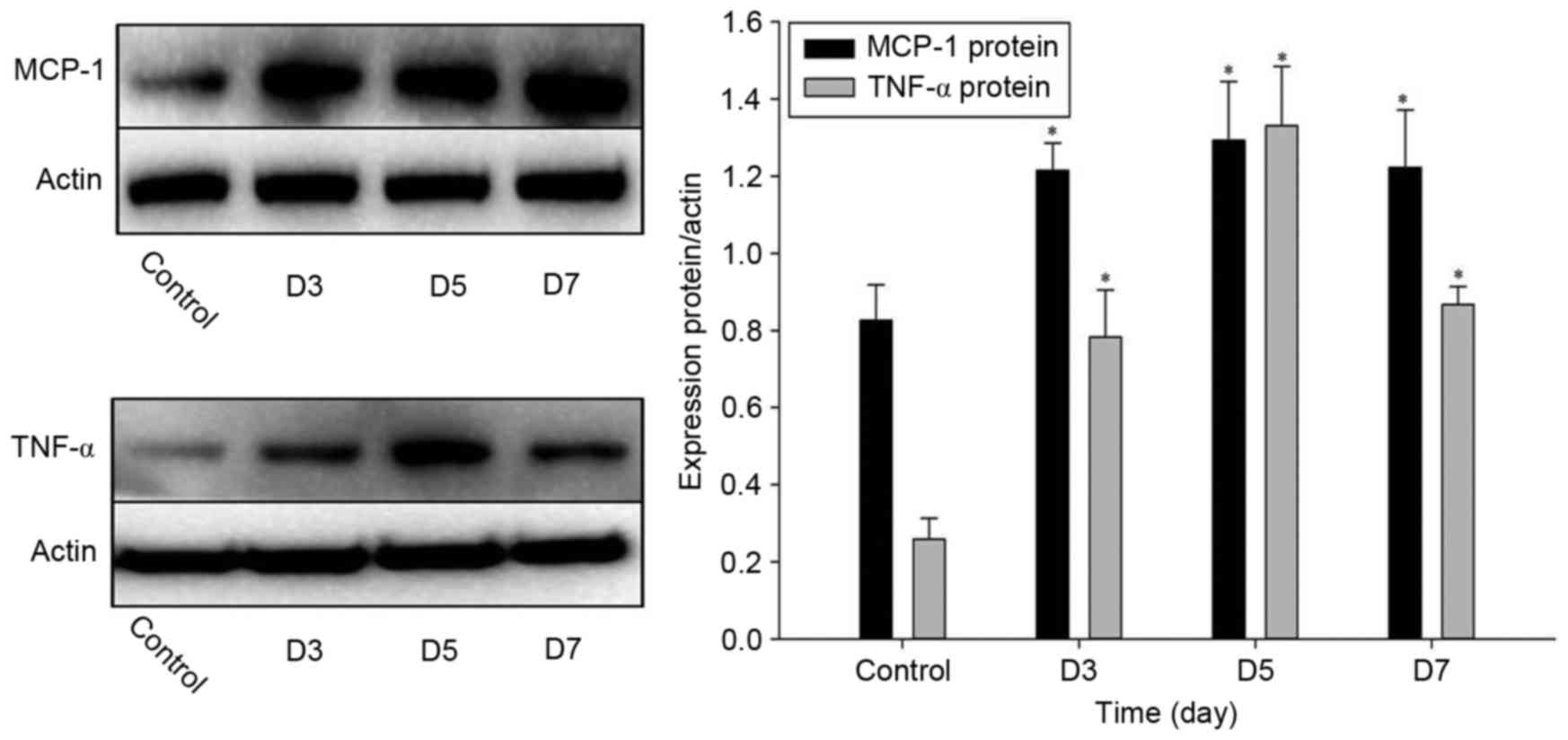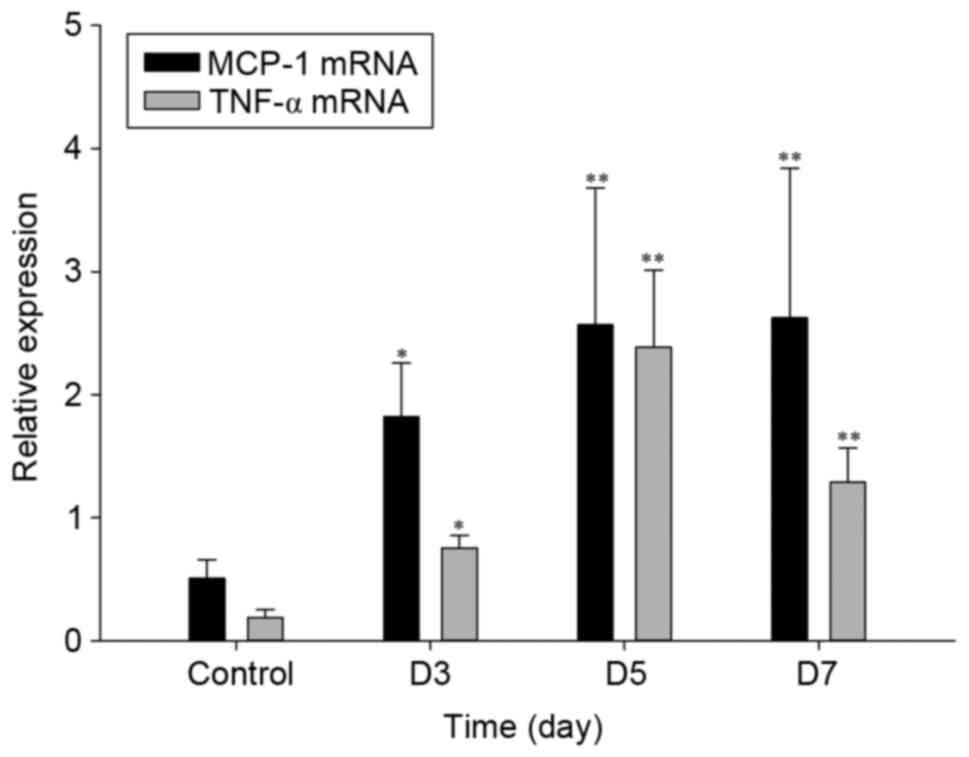|
1
|
Tang J, Fang T, Song D, Liang J, Yu F and
Wang C: Free deep inferior epigastric artery perforator flap for
reconstruction of soft-tissue defects in extremities of children.
Microsurgery. 11:221272013.
|
|
2
|
Zeltzer AA and Van Landuyt K:
Reconstruction of a massive lower limb soft-tissue defect by giant
free DIEAP flap. J Plast Reconstr Aesthet Surg. 65:e42–e45. 2012.
View Article : Google Scholar : PubMed/NCBI
|
|
3
|
Gill PS, Hunt JP, Guerra AB, Dellacroce
FJ, Sullivan SK, Boraski J, Metzinger SE, Dupin CL and Allen RJ: A
10-year retrospective review of 758 DIEP flaps for breast
reconstruction. Plast Reconstr Surg. 113:1153–1160. 2004.
View Article : Google Scholar : PubMed/NCBI
|
|
4
|
Taylor GI, Chubb DP and Ashton MW: True
and ‘choke’ anastomoses between perforator angiosomes: Part i.
anatomical location. Plast Reconstr Surg. 132:1447–1456.
2013.PubMed/NCBI
|
|
5
|
Chubb DP, Taylor GI and Ashton MW: True
and ‘choke’ anastomoses between perforator angiosomes: Part II.
dynamic thermographic identification. Plast Reconstr Surg.
132:1457–1464. 2013. View Article : Google Scholar : PubMed/NCBI
|
|
6
|
Taylor GI and Pan WR: Angiosomes of the
leg: Anatomic study and clinical implications. Plast Reconstr Surg.
102:599–618. 1998. View Article : Google Scholar : PubMed/NCBI
|
|
7
|
Miyamoto S, Minabe T and Harii K: Effect
of recipient arterial blood inflow on free flap survival area.
Plast Reconstr Surg. 121:505–513. 2008. View Article : Google Scholar : PubMed/NCBI
|
|
8
|
Zhuang Y, Hu S, Wu D, Tang M and da Xu C:
A novel in vivo technique for observations of choke vessels in a
rat skin flap model. Plast Reconstr Surg. 130:308–317. 2012.
View Article : Google Scholar : PubMed/NCBI
|
|
9
|
Dhar SC and Taylor GI: The delay
phenomenon: The story unfolds. Plast Reconstr Surg. 104:2079–2091.
1999. View Article : Google Scholar : PubMed/NCBI
|
|
10
|
Smits AI, Ballotta V, Driessen-Mol A,
Bouten CV and Baaijens FP: Shear flow affects selective monocyte
recruitment into MCP-1-loaded scaffolds. J Cell Mol Med.
18:2176–2188. 2014. View Article : Google Scholar : PubMed/NCBI
|
|
11
|
Cochain C, Channon KM and Silvestre JS:
Angiogenesis in the infarcted myocardium. Antioxid Redox Signal.
18:1100–1113. 2013. View Article : Google Scholar : PubMed/NCBI
|
|
12
|
Szabó C and Papapetropoulos A: Hydrogen
sulphide and angiogenesis: Mechanisms and applications. Br J
Pharmacol. 164:853–865. 2011. View Article : Google Scholar : PubMed/NCBI
|
|
13
|
Matsui H, Motooka M, Koike H, Inoue M,
Iwasaki T, Suzuki T, Kurabayashi M and Yokoyama T:
Ischemia/reperfusion in rat heart induces leptin and leptin
receptor gene expression. Life Sci. 80:672–680. 2007. View Article : Google Scholar : PubMed/NCBI
|
|
14
|
Chalothorn D, Clayton JA, Zhang H, Pomp D
and Faber JE: Collateral density, remodeling, and VEGF-A expression
differ widely between mouse strains. Physiol Genomics. 30:179–191.
2007. View Article : Google Scholar : PubMed/NCBI
|
|
15
|
Yoshida S, Yoshida A and Ishibashi T:
Induction of IL-8, MCP-1, and bFGF by TNF-alpha in retinal glial
cells: Implications for retinal neovascularization during
post-ischemic inflammation. Graefes Arch Clin Exp Ophthalmol.
242:409–413. 2004. View Article : Google Scholar : PubMed/NCBI
|
|
16
|
Frangogiannis NG, Smith CW and Entman ML:
The inflammatory response in myocardial infarction. Cardiovasc Res.
53:31–47. 2002. View Article : Google Scholar : PubMed/NCBI
|
|
17
|
Wang L, Chopp M, Teng H, Bolz M, Francisco
MA, Aluigi DM, Wang XL, Zhang RL, Chrsitensen S, Sager TN, et al:
Tumor necrosis factor a primes cerebral endothelial cells for
erythropoietin-induced angiogenesis. J Cereb Blood Flow Metab.
31:640–647. 2011. View Article : Google Scholar : PubMed/NCBI
|
|
18
|
Deshmane SL, Kremlev S, Amini S and Sawaya
BE: Monocyte chemoattractant protein-1 (MCP-1): An overview. J
Interferon Cytokine Res. 29:313–326. 2009. View Article : Google Scholar : PubMed/NCBI
|
|
19
|
Stowe AM, Wacker BK, Cravens PD, Perfater
JL, Li MK, Hu R, Freie AB, Stüve O and Gidday JM: CCL2 upregulation
triggers hypoxic preconditioning-induced protection from stroke. J
Neuroinflammation. 9:332012. View Article : Google Scholar : PubMed/NCBI
|
|
20
|
Roberts TK, Eugenin EA, Lopez L, Romero
IA, Weksler BB, Couraud PO and Berman JW: CCL2 disrupts the
adherens junction: Implications for neuroinflammation. Lab Invest.
92:1213–1233. 2012. View Article : Google Scholar : PubMed/NCBI
|
|
21
|
Vinores SA, Xiao WH, Shen J and
Campochiaro PA: TNF-alpha is critical for ischemia-induced
leukostasis, but not retinal neovascularization nor VEGF-induced
leakage. J Neuroimmunol. 182:73–79. 2007. View Article : Google Scholar : PubMed/NCBI
|
|
22
|
Livak KJ and Schmittgen TD: Analysis of
relative gene expression data using real-time quantitative PCR and
the 2(−Delta Delta C(T)) Method. Methods. 25:402–408. 2001.
View Article : Google Scholar : PubMed/NCBI
|
|
23
|
Sun Y, Li QF, Zhang Y, Hu R and Jiang H:
Isoflurane preconditioning increases survival of rat skin
random-pattern flaps by induction of HIF-1alpha expression. Cell
Physiol Biochem. 31:579–591. 2013. View Article : Google Scholar : PubMed/NCBI
|
|
24
|
Hamilton K, Wolfswinkel EM, Weathers WM,
Xue AS, Hatef DA, Izaddoost S and Hollier LH Jr: The delay
phenomenon: A compilation of knowledge across specialties.
Craniomaxillofac Trauma Reconstr. 7:112–118. 2014. View Article : Google Scholar : PubMed/NCBI
|
|
25
|
Gigliofiorito P, Iacob S, Pendolino AL,
Piombino L, Segreto F and Persichetti P: True and ‘choke’
anastomoses between perforator angiosomes: Part I. Anatomical
location. Plast Reconstr Surg. 133:890e–891e. 2014. View Article : Google Scholar : PubMed/NCBI
|
|
26
|
Williams BA, Currie RW and Morris SF:
Impact of arteriogenesis in plastic surgery: Choke vessel growth
proceeds via arteriogenic mechanisms in the rat dorsal island skin
flap. Microcirculation. 16:235–250. 2009. View Article : Google Scholar : PubMed/NCBI
|
|
27
|
Ghali S, Butler PE, Tepper OM and Gurtner
GC: Vascular delay revisited. Plast Reconstr Surg. 119:1735–1744.
2007. View Article : Google Scholar : PubMed/NCBI
|
|
28
|
Goukassian DA, Qin G, Dolan C, Murayama T,
Silver M, Curry C, Eaton E, Luedemann C, Ma H, Asahara T, et al:
Tumor necrosis factor-alpha receptor p75 is required in
ischemia-induced neovascularization. Circulation. 115:752–762.
2007. View Article : Google Scholar : PubMed/NCBI
|
|
29
|
Stevens CR, Williams RB, Farrell AJ and
Blake DR: Hypoxia and inflammatory synovitis: Observations and
speculation. Ann Rheum Dis. 50:124–132. 1991. View Article : Google Scholar : PubMed/NCBI
|
|
30
|
Bouchentouf M, Paradis P, Forner KA,
Cuerquis J, Boivin MN, Zheng J, Boulassel MR, Routy JP, Schiffrin
EL and Galipeau J: Monocyte derivatives promote angiogenesis and
myocyte survival in a model of myocardial infarction. Cell
Transplant. 19:369–386. 2010. View Article : Google Scholar : PubMed/NCBI
|
|
31
|
Rangasamy S, McGuire PG, Nitta Franco C,
Monickaraj F, Oruganti SR and Das A: Chemokine mediated monocyte
trafficking into the retina: Role of inflammation in alteration of
the blood-retinal barrier in diabetic retinopathy. PLoS One.
9:e1085082014. View Article : Google Scholar : PubMed/NCBI
|
|
32
|
Kwon YW, Heo SC, Jeong GO, Yoon JW, Mo WM,
Lee MJ, Jang IH, Kwon SM, Lee JS and Kim JH: Tumor necrosis
factor-a-activated mesenchymal stem cells promote endothelial
progenitor cell homing and angiogenesis. Biochim Biophys Acta.
1832:2136–2144. 2013. View Article : Google Scholar : PubMed/NCBI
|
|
33
|
Gardiner TA, Gibson DS, de Gooyer TE, de
la Cruz VF, McDonald DM and Stitt AW: Inhibition of tumor necrosis
factor-alpha improves physiological angiogenesis and reduces
pathological neovascularization in ischemic retinopathy. Am J
Pathol. 166:637–644. 2005. View Article : Google Scholar : PubMed/NCBI
|















